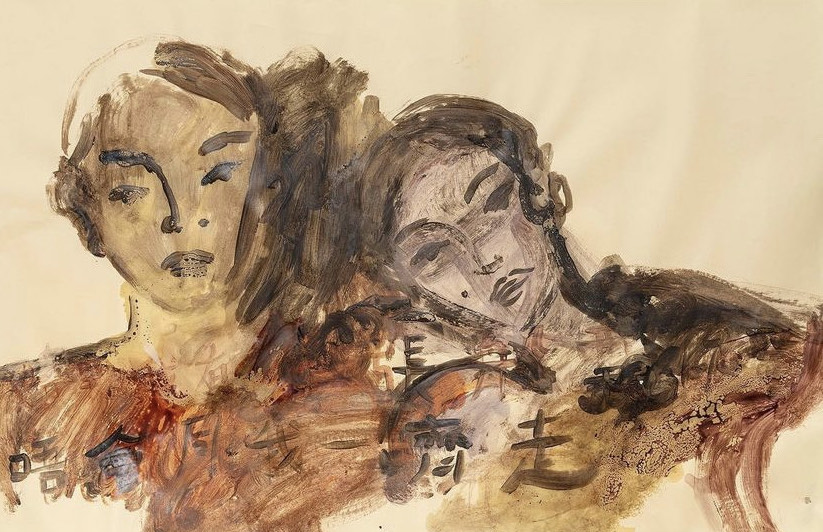“The Moon spat a cigarette out at me last night. Her face was veiled in smoke, a secret tangible magic.” An excerpt of the multi-faceted Faye Wei Wei’s poetry reads much like a soliloquy.
The poet and visual artist has graced social media with work kindred to the feeling of Renaissance Art. Replete with soft brush strokes, gentle swirls, and soothing light colours, the artist’s oeuvre speaks to and references the canon of fine art that precedes her work. Wei Wei’s work, in many ways, bares a resemblance to that of Edgar Degas, whose paintings contrasted the realism of the Renaissance, with feathered asymmetries, smudged colours, and faceless ballerinas.

What made Renaissance art so memorable centuries later is that it catered to perfection. The perfection of detail and realism was potent, regardless if the painter was marvelling at a woman’s body or a crowd of people. It left spectators who found themselves in the Metropolitan museum assured of themes and the value of art. So much, so that this perfection was deemed an implicit devaluation of anything that dared to be different.
Wei Wei is, in many ways a student of that difference, recalling the work of the Modernists who rallied against the inherent perfectionism and bourgeois implications of the renaissance. The imperfections in her work aren’t imperfections at all, speaking instead to a certain temporary, figurative impressionism, understanding how to capture simplicity with abstraction. “What does it mean for the eyes to be so hooded like that?” “Is it their love that swallows them, or are they bleeding out from under it?”

The artist brings a soft touch with an incredible amount of power. Her perspective builds upon her cultural heritage, experiences, and admiration. Many of the painters in the centuries before emphasized femininity and culture performatively, as they used women as a device for the male gaze. Paintings of women with tropes of vulnerability and softness were perpetuated to produce a version of femininity and beauty that men could wield; holding an implicit standard for women to acquire. European features, pale skin, a curvy body with soft strokes and wide hips, or maybe, a fragile body, almost breakable with dull and heartbroken eyes. These are all reflections of the regurgitated and simplified versions of womanhood that male painters and visionaries have produced for their own fetishes.
The impact that these painters have had on later centuries, has spread across different art forms. The fantasy of the woman has brought obtrusive boundaries to realism. The aesthetics that artists created surfacing the male gaze have continued centuries later, and have obtained power in different media subsections. These aesthetics found themselves tethered to sexism and rape culture, as women, vulnerability, and beauty have become unattainable thresholds, existing anywhere except in a portrait. They were used as devices for art, as well as for the artist’s curation of power.
Women were never supposed to be anything more than what men conjured up in their minds. Women in the western art canon up until modernity were in a sense reduced to walking muses; to become real in terms of what men preferred. Silent, attractive, and weak. A fathomed idea like this made it dangerous for women with talent, women with opinions, and women, in general, to speak up for themselves because the male gaze prohibited women from being seen as autonomous and free-willed. The bodies of women— not specifically naked, but even just their faces, their lips, and their hands were studied and objectified for the canvas.

Wei Wei like many other artists dabbling in the female gaze and the dismantling of patriarchal power through art debunks the usage of culture, beauty, and feminity for the male taking. She revalues these ideals as an individualized relationship because it means something different for each person. Her usage of abstraction emphasizes what the viewer wants to see, along with what Wei Wei allows them to.
 JoliAmour DuBose-Morris is a multimedia journalist and screenwriter based in New York and California.
JoliAmour DuBose-Morris is a multimedia journalist and screenwriter based in New York and California.
JoliAmour is currently in her final year of her B.A. at The University of San Francisco where she’s focusing on film and journalism.

